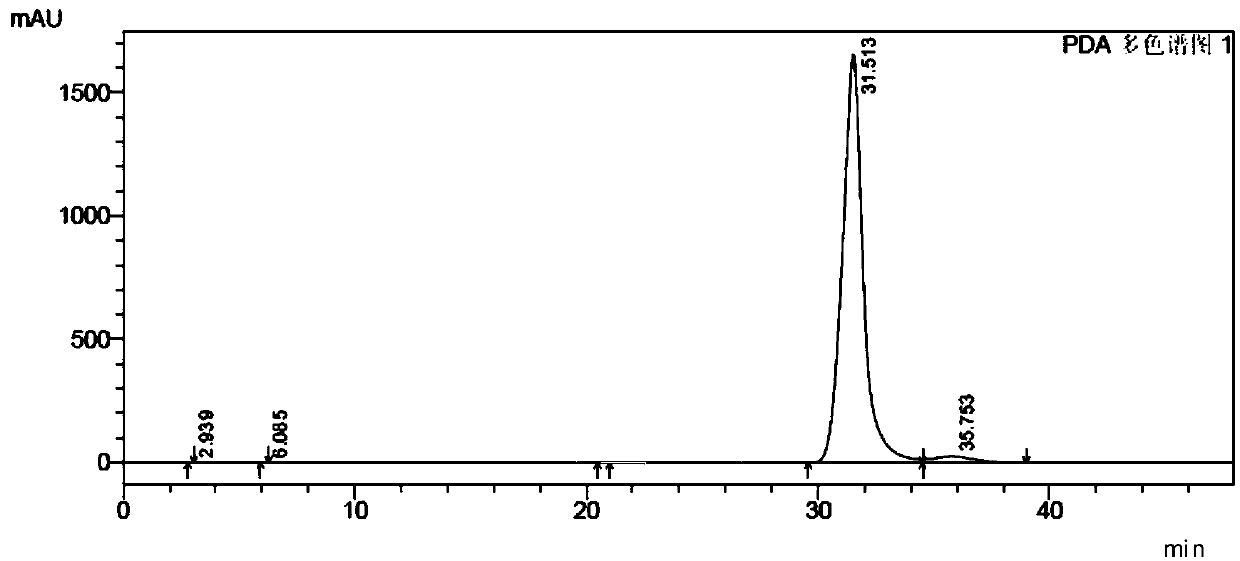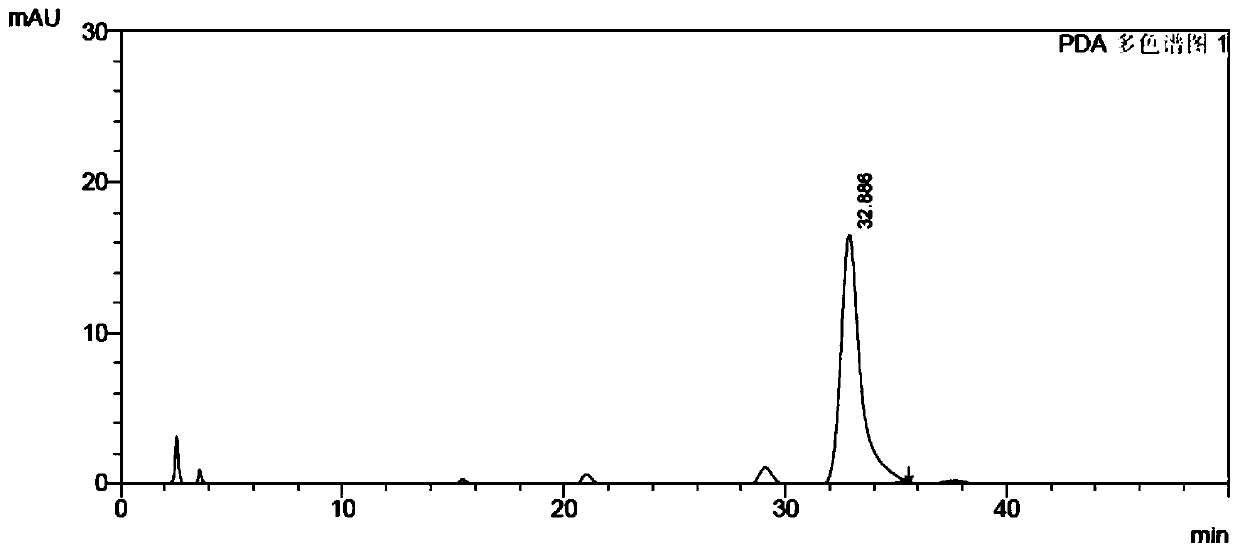Method for detecting bisphenol A
A bisphenol and sample technology, applied in the field of detection of bisphenol A, can solve the problems of low accuracy and sensitivity of titration method, inability to use trace samples for detection, long pretreatment time, etc., and achieve simple sample pretreatment and lower detection limit. , the effect of high sensitivity
- Summary
- Abstract
- Description
- Claims
- Application Information
AI Technical Summary
Problems solved by technology
Method used
Image
Examples
Embodiment 1
[0032] Example 1 standard curve drawing and sensitivity detection
[0033] Accurately weigh the appropriate amount of BPA, and prepare reference solution with concentrations of 56 μg / mL, 28 μg / mL, 14 μg / mL, 7 μg / mL, 3.5 μg / mL and 1.75 μg / mL. Into the aqueous hydrochloric acid solution with pH 1-2, slowly add 5 mL of 0.5 mmol aniline solution dropwise, and mix well. Stir in an ice bath, then add 5mL of 0.5mmol sodium nitrite solution dropwise, after fully reacting for 30min, adjust the pH value of the solution to 8-10 with sodium hydroxide, slowly add 5mL of the above-mentioned bisphenol A reference solution of different concentrations dropwise , concentrated to dryness after reacting for 20 minutes to obtain a derivatized product, after constant volume with chromatographic methanol, filtered through a 0.45 μm organic membrane, discarded the initial filtrate, and then analyzed the sample solution using high-performance liquid chromatography-ultraviolet / fluorescence detection me...
Embodiment 2
[0044] Prepare 4-6mmol hydrochloric acid into a hydrochloric acid solution with a pH of 1-2, slowly add 0.5mmol aniline solution dropwise, and mix well. Under stirring in an ice bath, 0.5 mmol of sodium nitrite solution was added dropwise. After fully reacting for 30 minutes, the pH value of the solution was adjusted to 9 with sodium hydroxide, and 100 mL of drinking water was slowly added dropwise. After reacting for 20 minutes, it was concentrated to dryness to obtain a derivatized product. After constant volume with chromatographic methanol, filter with 0.45 μm organic membrane, discard the primary filtrate, and use high performance liquid chromatography-ultraviolet / fluorescence detection method to analyze the sample solution in the subsequent filtrate, and calculate the content of bisphenol A in the sample. The results are shown in Table 1.
[0045] The chromatographic column is a C18 liquid chromatographic column, the flow rate is 1.0mL / min, the injection volume is 10μL, ...
Embodiment 3
[0047] Prepare 4-6mmol hydrochloric acid into a hydrochloric acid solution with a pH of 1-2, slowly add 0.5mmol aniline solution dropwise, and mix well. Under stirring in an ice bath, 0.5 mmol of sodium nitrite solution was added dropwise. After fully reacting for 30 minutes, the pH value of the solution was adjusted to 9 with sodium hydroxide, and 100 mL of distilled water was slowly added dropwise. After reacting for 20 minutes, it was concentrated to dryness to obtain a derivatized product. After constant volume of chromatographic methanol, filter with 0.45 μm organic membrane, discard the primary filtrate, and analyze the sample solution with high performance liquid chromatography-ultraviolet / fluorescence detection method in the subsequent filtrate, and calculate the content of bisphenol A in the sample. The results are shown in Table 1. The HPLC chromatogram of the derivative product of BPA in aniline and distilled water is as follows: figure 2 shown.
[0048] The chro...
PUM
 Login to View More
Login to View More Abstract
Description
Claims
Application Information
 Login to View More
Login to View More - R&D
- Intellectual Property
- Life Sciences
- Materials
- Tech Scout
- Unparalleled Data Quality
- Higher Quality Content
- 60% Fewer Hallucinations
Browse by: Latest US Patents, China's latest patents, Technical Efficacy Thesaurus, Application Domain, Technology Topic, Popular Technical Reports.
© 2025 PatSnap. All rights reserved.Legal|Privacy policy|Modern Slavery Act Transparency Statement|Sitemap|About US| Contact US: help@patsnap.com



